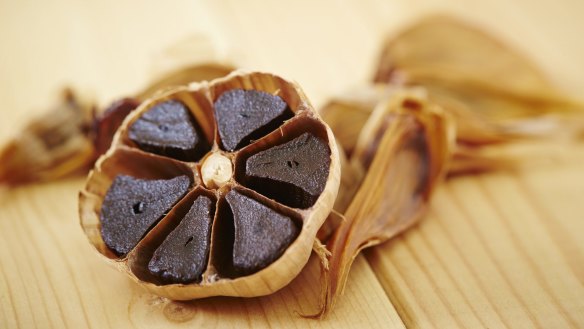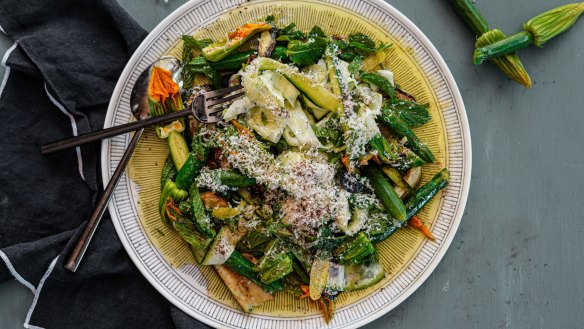Black garlic: Everything you need to know

What is it?
Black garlic is your normal, everyday culinary garlic that undergoes a remarkable enzymatic transformation under time, heat and humidity. Whole bulbs are matured between two to six weeks, between 60C to 90C at 80-90 per cent humidity.
Lower temperatures and a longer curing time leads to better, deeper flavour, pundits say. During curing, the compounds that make garlic strongly flavoured and powerfully aromatic combine with the natural sugars and protein in a process called the Maillard reaction.
It's the same reaction that makes roast beef brown and cake crumbs golden and delicious. Black garlic's origin is debated, but it appears to have been developed in Korea with patents taken out in the mid-20th century. However, oral histories have black garlic being made in families for centuries.
In Asian countries such as Korea, Japan and Thailand, it is appreciated as much for its medicinal properties as its culinary uses. Black garlic made the jump into Western kitchens, gaining popularity in the past few decades.

Why do we love it?
The curing process completely transforms the colour, texture, flavour, and aroma of the garlic. It also preserves it. The cloves become smooth, sweet, and deep-brown to black, and are soft, supple with a long, lingering, delicious flavour without the crunch, heat, sting, and stench of raw garlic.
Black garlic is chock full with antioxidants and has been associated with lowering blood pressure. People who can't digest garlic can eat black garlic as the fructans are transformed during processing.
Who uses it?
Mark Briggs from Sardine in Paynesville, Victoria, insists on using Snowy River black garlic for its deep flavour and ability to lift a dish. He grates it finely, folds it through Holy Goat La Luna goats cheese, and pipes this into crisp, savoury gougeres made with Maffra cheddar. "Black garlic loves dairy," he says.
He also finely grates black garlic and folds it through Gippsland Jersey butter with a little sherry vinegar and puts a little over hot chargrilled runner beans.
Celebrity chef Peter Kuravita has been known to cook heirloom strawberries with black garlic to top a mousse while Bentley Bar's Brent Savage has been using it since 2008, saying, "a little can add a subtle kick of umami in dressings for vegetables and salads while more can be used as a powerful flavour that can stand up to beef, duck and lamb when used as puree".
How do you use it?
Think of black garlic as being a flavour enhancer as well as having its own deep-rounded character. If you haven't tried it before, take a small clove and bite into it to understand its thick sticky texture and sweet and savoury nature. It loves being finely grated so a good microplane is going to be its best friend.
Cook it with butter, oil, and white wine to make a pasta sauce. Grate a few cloves into a cup of ricotta and cream cheese, season and serve as a dip. Add a few chopped cloves to your next bolognese, burger mix or meatballs.
Blitz with oil and vinegar to make a salad dressing or grate into melted butter and brush over mushrooms before grilling them. Even try a clove dipped into melted dark chocolate.
Where do you get it?
Look for black garlic at farmers' markets, good greengrocers, and some butchers such as meatsmith.com.au. It is stocked in food stores like essentialingredient.com.au. It is readily available online direct from the producer. Try these local suppliers, snowyriverblackgarlic.com.au, from near Orbost, Victoria, and fawkfoods.com in the Hunter Valley.
After more than 10 years of answering readers' vexing culinary questions, Richard Cornish has turned his focus to ingredients. Suggest an ingredient via email to brainfood@richardcornish.com.au or tweet to @foodcornish.
Appears in these collections
More:
From our partners
Original URL: https://www.smh.com.au/goodfood/black-garlic-everything-you-need-to-know-20210706-h1wyx0.html
